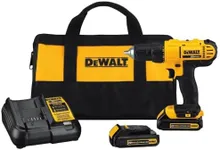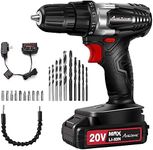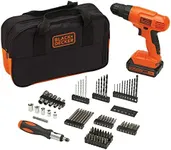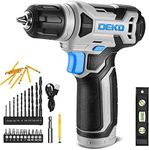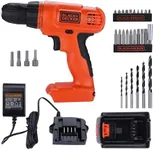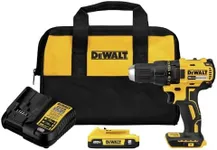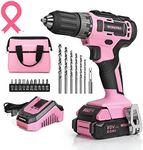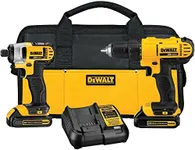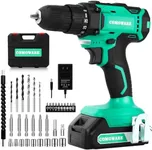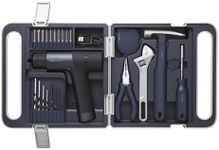Buying Guide for the Best Drill Machine
Choosing the right drill machine can make a significant difference in the efficiency and ease of your projects. Whether you're a DIY enthusiast or a professional, understanding the key specifications of a drill machine will help you make an informed decision. Consider what you'll be using the drill for, the materials you'll be working with, and how often you'll need it. This will guide you in selecting a drill that meets your needs and ensures you get the best performance and durability.PowerPower in a drill machine is measured in watts (W) or volts (V). It determines how much force the drill can apply. Higher power drills (600W and above or 18V and above) are suitable for heavy-duty tasks like drilling into concrete or metal. Medium power drills (300W-600W or 12V-18V) are good for general home use, such as drilling into wood or plastic. Lower power drills (below 300W or 12V) are ideal for light tasks like assembling furniture. Choose a power level based on the toughest material you expect to drill.
SpeedSpeed in a drill machine is measured in rotations per minute (RPM). Higher speeds (2000 RPM and above) are useful for drilling into softer materials like wood and plastic, as they allow for faster drilling. Lower speeds (below 1000 RPM) are better for harder materials like metal and masonry, as they provide more control and prevent overheating. Variable speed drills offer the flexibility to adjust the speed based on the material and task, making them versatile for different projects.
Chuck SizeThe chuck size determines the maximum diameter of the drill bit that the drill can hold. Common sizes are 10mm (3/8 inch) and 13mm (1/2 inch). A larger chuck size (13mm) allows for bigger drill bits, which is useful for heavy-duty tasks and larger holes. A smaller chuck size (10mm) is sufficient for most household tasks and is generally lighter and easier to handle. Choose a chuck size based on the size of the holes you need to drill and the types of drill bits you plan to use.
Corded vs. CordlessCorded drills are powered by electricity and provide consistent power without the need for recharging. They are ideal for continuous, heavy-duty tasks. Cordless drills are battery-powered, offering greater mobility and convenience, especially in areas without easy access to power outlets. However, they require recharging and may have limited runtime. Choose a corded drill if you need uninterrupted power for long periods, and a cordless drill if you value portability and ease of use.
WeightThe weight of a drill machine affects its ease of use and comfort, especially during prolonged use. Lighter drills (under 2 kg) are easier to handle and reduce fatigue, making them suitable for overhead or extended tasks. Heavier drills (over 2 kg) often have more power and durability, which is beneficial for heavy-duty applications. Consider the weight based on how long you'll be using the drill and the type of tasks you'll be performing.
Additional FeaturesAdditional features can enhance the functionality and convenience of a drill machine. Features like a built-in LED light can improve visibility in dark or confined spaces. A keyless chuck allows for quick and easy bit changes without the need for a separate tool. A hammer function adds the ability to drill into masonry and concrete. Consider which additional features will be beneficial for your specific needs and make your drilling tasks easier and more efficient.
